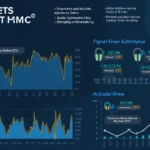The Historical Significance of Bitcoin Halving
In the ever-evolving world of cryptocurrency, few events capture the attention of investors and enthusiasts like Bitcoin halving. The Bitcoin halving, a pivotal event that occurs approximately every four years, reduces the reward for mining Bitcoin blocks by half. The implications of this event are profound, affecting everything from Bitcoin’s price, mining economics, to the overall health of the cryptocurrency market. With the latest halving set to occur in 2024, understanding its historical significance is vital. In this article, we will delve into the historical perspectives, economic implications, and future potential of Bitcoin halving.
What is Bitcoin Halving?
Bitcoin halving is a pre-programmed event embedded in the Bitcoin protocol that reduces the mining reward from 12.5 Bitcoin to 6.25 Bitcoin as of the next scheduled halving. Each time a halving occurs, the number of new Bitcoins generated approximately every ten minutes is cut in half. This systematic reduction is intended to control the supply of Bitcoin, mimicking the scarcity of precious metals, thus metaphorically positioning Bitcoin as ‘digital gold’.
The first halving took place in November 2012, lowering the block reward from 50 to 25 Bitcoins. The second halving happened in July 2016, dropping it to 12.5, and the latest one in May 2020 further reduced it to 6.25. The upcoming fourth halving is anticipated in April 2024.

Why is Bitcoin Halving Significant?
- Supply Control: Bitcoin’s supply is capped at 21 million coins. Halving plays a critical role in ensuring that Bitcoin is scarce, which can potentially drive up demand.
- Market Sentiment: Historical trends indicate that Bitcoin’s price tends to rise in anticipation of halving events, creating a bullish sentiment in the market.
- Mining Economics: As rewards decrease, miners must adapt their strategies to remain profitable, often moving towards more efficient technologies.
- Historical Trends: After the past halvings, there was noticeable growth in Bitcoin’s price, making it a focal point for traders and investors.
A Brief History of Bitcoin Halving Events
| Halving Date | Block Reward | Bitcoin Price (Approx.) | Market Reaction |
|---|---|---|---|
| November 28, 2012 | 50 to 25 BTC | $12 | Strong Bull Run |
| July 9, 2016 | 25 to 12.5 BTC | $650 | Long Bull Market |
| May 11, 2020 | 12.5 to 6.25 BTC | $8,500 | Record Highs Soon After |
Bitcoin Halving and Market Trends
Historically, Bitcoin halvings have been followed by significant price increases. For instance, following the first halving in 2012, Bitcoin soared to over $1,100 within a year. The second halving also led to substantial price growth, culminating in Bitcoin reaching nearly $20,000 in late 2017. The most recent halving saw Bitcoin climb to an all-time high of over $60,000 in April 2021. Analysts suggest that Bitcoin’s unique supply dynamics, governed by halving events, play a crucial role in driving long-term price appreciation.
Future Outlook: What to Expect in 2024
With the next halving approaching in 2024, many are left wondering what to expect. Current trends suggest a growing interest in Bitcoin, especially in emerging markets like Vietnam, where user adoption rates are on the rise, with recent data indicating a growth of over 40% in 2022. This phenomenon is also observed in the growing acceptance of cryptocurrency as a viable financial asset.
Here are some potential scenarios that could unfold:
- Continued Price Growth: If history repeats itself, Bitcoin could see significant price increases post-halving, particularly as institutional investments flow into the space.
- Increased Mining Efficiency: Miners will need to adapt by investing in more efficient technologies and operations, leading to changes in the mining landscape.
- Regulatory Scrutiny: As Bitcoin gains attention, so does regulatory scrutiny, particularly in markets like Vietnam, where governmental frameworks are being established.
Conclusion
The historical significance of Bitcoin halving cannot be understated. It not only shapes the economic landscape of Bitcoin but also influences market sentiment, investing strategies, and the future of digital currency. As we approach the 2024 halving, understanding these dynamics is essential for anyone involved in the cryptocurrency space.
In conclusion, Bitcoin halving continues to be a pivotal event that affects the entire cryptocurrency ecosystem. By recognizing its historical context and potential future impacts, investors can better position themselves as they navigate this volatile market. Remember to do your own research and consult with local regulators, as this article is not financial advice.
Learn more about Bitcoin Halving and Cryptocurrency Investments at Bitcryptodeposit.








